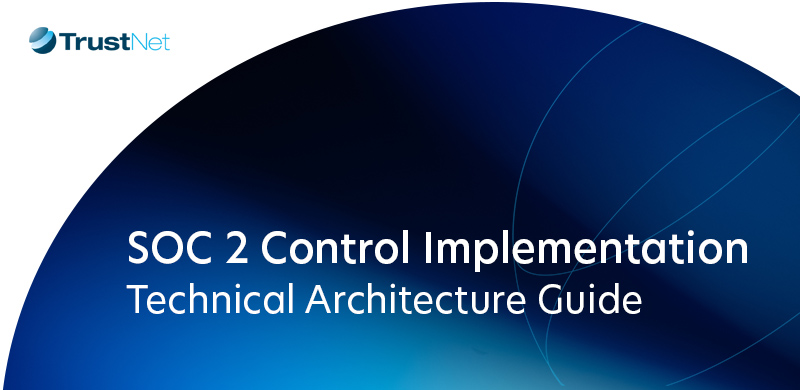Navigating the Complex World of Cyber Security Audit and Compliance

As organizations increasingly rely on digital technologies to conduct their operations, safeguarding sensitive information and systems from cyber threats has never been more critical. This leads us to cyber security audit and compliance—a world where vigilance meets regulation.
In this article, we will discuss the concepts of cyber security audit and compliance. Furthermore, we will dive into the importance of adhering to regulatory standards and industry best practices, not merely as a legal obligation but as a cornerstone of trust and reliability in an organization’s digital presence. Keep reading to learn more.
Understanding the Challenges in Cyber Security Audit
Two of the most significant hurdles in a cyber security audit are the complexity of regulatory requirements and the evolution of cyber threats.
The landscape of regulatory requirements and compliance frameworks in cyber security is both vast and varied, often characterized by the following aspects:
- Multiplicity of Standards: Organizations may be subject to multiple standards and regulations depending on their industry, size, and geographic location. For instance, an international financial service provider must navigate GDPR in Europe, CCPA in California, and possibly other local privacy laws.
- Dynamic Nature: Compliance frameworks are not static; they evolve in response to emerging threats and technological advancements. Keeping up-to-date with these changes requires constant vigilance and adaptability.
- Specificity and Breadth: Some regulations are highly specific, while others are more general, leaving room for interpretation. This variance necessitates a tailored approach to compliance.
Furthermore, cyber threats are continuously evolving in complexity and scale. This dynamic nature presents a significant challenge for organizations trying to protect their digital assets:
- Advanced Persistent Threats (APTs): These sophisticated attacks are designed to evade detection and persist within a network for extended periods, making them particularly challenging to uncover and neutralize.
- Rapid Evolution of Malware: New malware variants are constantly being developed, often designed to exploit recently discovered vulnerabilities before they can be patched.
- Insider Threats: Sometimes, the risk comes from within, whether intentionally through malicious actors or unintentionally through negligent employees. Both scenarios require distinct detection and prevention strategies.
By recognizing and addressing these challenges head-on, organizations can better position themselves to protect their digital assets and maintain compliance with relevant standards and frameworks.
Learn more about our cybersecurity and compliance services Here
Key Components of a Cyber Security Audit
Continuing from the challenges in cyber security audit, it’s pivotal to understand the key components that make up a comprehensive cyber security audit. Let’s delve into the core elements:
Risk Assessment and Vulnerability Scanning Procedures
Risk assessment and vulnerability scanning are critical first steps in identifying and understanding potential threats to an organization’s digital assets. These procedures typically involve:
- Identifying Assets: Cataloging all assets within the organization’s digital infrastructure, including hardware, software, data, and network resources.
- Assessing Vulnerabilities: Utilizing vulnerability scanning tools to detect existing weaknesses in the system that could potentially be exploited by cyber attackers.
- Evaluating Risks: Analyzing the identified vulnerabilities to determine the likelihood of exploitation and the potential impact on the organization. This helps prioritize remediation efforts based on risk level.
Compliance Checks with Industry Standards like PCI DSS, HIPAA, etc.
Compliance with industry standards and regulations is a legal requirement and a testament to an organization’s commitment to maintaining a secure environment. A cyber security audit assesses compliance through:
- Review of Policies and Procedures: Ensuring that the organization’s policies and procedures align with the requirements of relevant standards such as PCI DSS for payment security, HIPAA for healthcare data protection, and others applicable to the industry and region.
- Documentation and Evidence Gathering: Collecting evidence of compliance through logs, configurations, and records of security practices to support audit findings.
- Gap Analysis: Identifying discrepancies between current practices and the standards’ requirements, followed by recommendations for bridging these gaps.
Incident Response Testing and Security Policy Reviews
Preparing for potential cyber incidents and regularly reviewing security policies are essential components of a cyber security audit. This includes:
- Incident Response Plan Testing: Conducting tabletop exercises or simulated attacks to test the effectiveness of the incident response plan. This helps identify weaknesses in the response strategy and areas for improvement.
- Policy Review and Update: Evaluating the organization’s security policies to ensure they are up-to-date with the latest threats, technologies, and best practices. This also involves ensuring that all employees know and understand these policies.
These components help organizations identify vulnerabilities, ensure compliance with industry standards, and prepare for potential cyber incidents, strengthening their overall security posture.
Best Practices for Successful Compliance
Achieving and maintaining compliance in cyber security is a dynamic, ongoing process. Here are pivotal strategies for successful compliance:
1. Establishing a Strong Security Culture Within the Organization
The foundation of any robust cyber security program lies in its culture. A strong security culture is characterized by:
- Awareness and Training: Regularly educating employees about the latest cyber threats and safe online practices. This includes training on recognizing phishing attempts, securing personal and professional data, and reporting suspicious activities.
- Leadership Involvement: Demonstrating a commitment to security from the top down. When leadership prioritizes and actively participates in security initiatives, it sets a tone for the rest of the organization.
- Encouraging Open Communication: Creating channels for employees to report security concerns without fear of repercussion. An open dialogue about security reinforces its importance and encourages vigilance among team members.
2. Regular Audits, Assessments, and Continuous Monitoring of Security Controls
Continuous evaluation and monitoring are key to identifying potential vulnerabilities and ensuring that security controls function as intended. This involves:
- Scheduled Audits and Assessments: Conducting regular security audits and risk assessments to identify and address vulnerabilities before they can be exploited.
- Implementing Continuous Monitoring Tools: Utilizing software tools that continuously monitor the network for unusual activities, indicating potential security breaches or weaknesses.
- Feedback Loop: Establishing a process for analyzing audit and assessment outcomes and integrating feedback into security strategies and policies for continuous improvement.
3. Collaboration Between IT, Compliance, and Business Units for Effective Audits
The complexity of modern cyber security landscapes requires a collaborative approach to compliance and audits. Effective collaboration involves:
- Cross-Departmental Teams: Forming teams that include members from IT, compliance, legal, and business units to ensure that all perspectives are considered in the audit process.
- Shared Responsibility Model: Recognizing that security and compliance are not solely the responsibility of the IT department. Every employee has a role to play in safeguarding the organization’s assets.
- Regular Meetings and Updates: Holding regular meetings to discuss upcoming regulations, share insights from recent audits, and update the organization on compliance requirements and strategy changes.
Implementing these best practices can significantly improve an organization’s ability to achieve and maintain compliance.
Tools and Technologies for Streamlining Audits
In this section, let’s explore some of the key tools and technologies that can significantly aid in the auditing process:
Automation Tools for Compliance Checks and Audit Trail Management
Automation is pivotal in modernizing and streamlining compliance checks and audit trail management. These tools can simplify compliance management by automating the collection and analysis of data against compliance standards.
Furthermore, automation tools help log and manage audit trails efficiently, ensuring that all actions are recorded and easily retrievable for future audits.
Security Information and Event Management (SIEM) Solutions for Real-Time Monitoring
SIEM solutions are essential for real-time monitoring, detection, and analysis of security events within an organization. These tools collect logs from various sources across the network, providing a unified view of the security landscape.
Additionally, many SIEM solutions have built-in features to support compliance reporting for standards like PCI DSS, GDPR, and HIPAA, making it easier to maintain continuous compliance.
Encryption Technologies to Secure Sensitive Data During Audits
Encryption technologies offer a robust solution for protecting data against unauthorized access. Organizations can ensure that sensitive information remains secure by encrypting data at rest and in transit.
Technologies like TLS (Transport Layer Security) for data in transit and AES (Advanced Encryption Standard) for data at rest are widely used. Encryption ensures only authorized personnel can access and review audit logs and compliance reports.
Leveraging these tools and technologies can significantly streamline the audit process, ensuring that compliance checks are thorough, audit trails are well-managed, and sensitive data is securely protected.
Embracing Cyber Security Audits for Enhanced Compliance
Navigating through cyber security audits involves dealing with strict regulations, adapting to constantly evolving cyber threats, and ensuring effective audit processes. A well-thought-out strategy is essential for handling these challenges.
Given these complexities, organizations must prioritize cyber security audits as part of their compliance efforts. This means regularly conducting audits, creating a culture that values security, and using the right tools and technologies to make the process smoother.
Our website is a good place to start for businesses looking for more knowledge and guidance. TrustNet offers advice, solutions, and insights to help businesses strengthen their cyber security measures and comply with key regulations.




